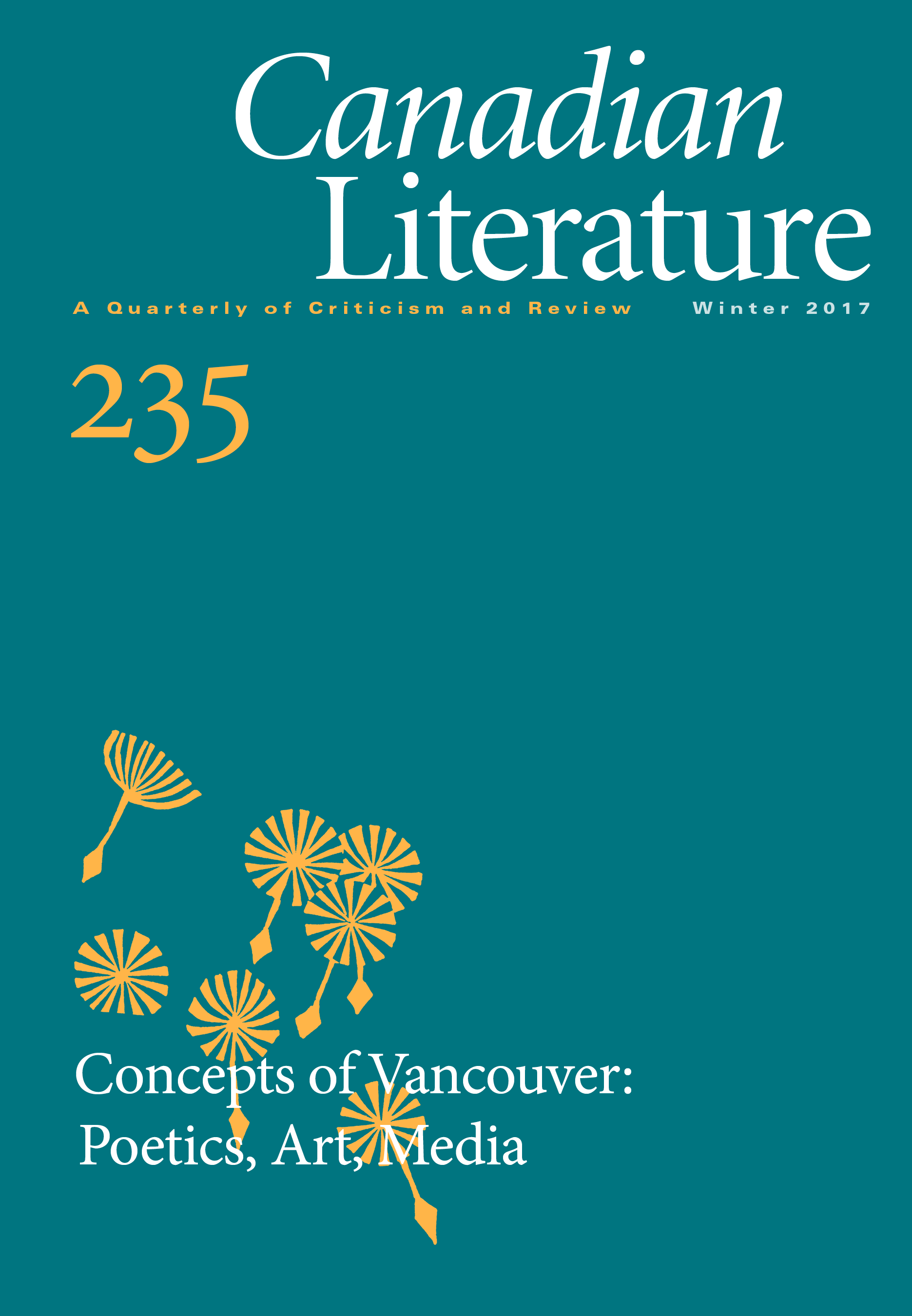Vancouver as a Going Concern: Artist Spaces, Public and Non
DOI:
https://doi.org/10.14288/cl.v0i235.189738Abstract
The history of artist’s spaces in Vancouver (since the 1960s) is, in some ways, a history of bureaucratic forms: Intermedia failing to cope with one; Iain and Ingrid Baxter’s N. E. Thing Co. having one readymade in the structure of the family; the Western Front and artist-run centres adopting an owner-operator bureaucracy as a stabilizing strategy, in order to hold space; and independent spaces organizing themselves around and through precarity. How these artists’ spaces emerge, survive, dissolve, and re-emerge is imbricated with issues of affordability, national and provincial arts policy, and shifting expectations of what art can and should do. In Jeff Derksen’s excellent history of the Vancouver-based Kootenay School of Writing (KSW), he cautions that “a history of an artist-run space can unfortunately become a history of its governmental funding” (288). Such an emphasis on funding structures, particularly in the case of the KSW, he argues, can diminish the agency of artists and writers, particularly those involved with the Kootenay School of Writing, in their collective to the material conditions created by changes in government policy. But I want to argue that there is a valuable history of artist spaces in Vancouver that can only be told through an analysis of the role that public funding has played in sustaining, constraining, and forming art practices and subjectivities over the past half-century.Downloads
Published
2018-09-10
Issue
Section
Articles


